
Exposé Online
What's old
Exposé print issues (1993-2011)
- 1 (October 1993)
- 2 (February 1994)
- 3 (May 1994)
- 4 (August 1994)
- 5 (October 1994)
- 6 (March 1995)
- 7 (July 1995)
- 8 (November 1995)
- 9 (March 1996)
- 10 (August 1996)
- 11 (February 1997)
- 12 (May 1997)
- 13 (October 1997)
- 14 (February 1998)
- 15 (July 1998)
- 16 (January 1999)
- 17 (April 1999)
- 18 (November 1999)
- 19 (May 2000)
- 20 (October 2000)
- 21 (March 2001)
- 22 (July 2001)
- 23 (December 2001)
- 24 (April 2002)
- 25 (September 2002)
- 26 (February 2003)
- 27 (August 2003)
- 28 (December 2003)
- 29 (April 2004)
- 30 (September 2004)
- 31 (March 2005)
- 32 (September 2005)
- 33 (May 2006)
- 34 (March 2007)
- 35 (January 2008)
- 36 (October 2008)
- 37 (July 2009)
- 38 (July 2010)
- 39 (Summer 2011)
Features
From Anadolu Pop to Electric Levantine —
The Murat Ses Interview

If you are an aficionado of Turkish progressive music, you will recognize Murat Ses as one of its pioneers. And if you are a long-time Exposé reader, you may recall reading reviews of his solo work. Over the past 12 months, Murat has released two more solo albums of his East meets West fusion: Binfen 2005 Remix and Electric Levantine. We were lucky enough to interview him in 2006 to give a fuller picture of the man and his career.
by Henry Schneider, Published 2008-01-01
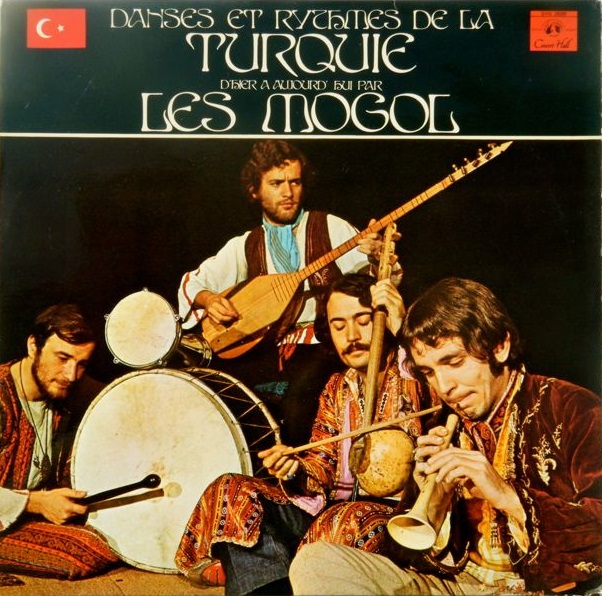 Please tell me a bit about your musical background.
Please tell me a bit about your musical background.
My musical background is strongly connected to the places where I have lived. I grew up in the multi-cultural environment of Istanbul, the wonderful setting that formed and is still shaping my creative process. Istanbul, with a heritage from an old empire and its unique ethnic texture, was the cultural, intellectual and artistic hub of a new republic on its way to modernization or westernization. In our neighborhood, there were Greek, Armenian, Jewish, and Kurdish families living alongside Turkish families.
All those facts had the mystical power of synthesizing a myriad of influences without having any kind of prejudices. This mixing of cultures led me to fuse anything coming my way and to work out my personal stuff from the very best of their quintessence. Sounds of the streets and sounds from the radio both local and European/American; these ingredients paved the way to my fusion of styles such as Anadolu Pop and Electric Levantine in the coming years.
You are considered the father of Anadolu Pop. How did you achieve this distinction? What other performers and bands helped develop this musical style?
I was experimenting and producing at a time when nobody believed in fusion including my band members (our singer for example explicitly stated that he would only sing British beat stuff). There was also a big reaction from the official broadcasting institution in the 60s and 70s against this kind of fusion as a ‘spoiling’ act that would destroy the original. I had the chance to show that it was possible to modernize all material without destroying its very core.
If you listen to music in Turkey, except for a few instances, you will always hear authentic Anatolian material mixed up with Western styles. There are good and bad examples. Good examples still help.
 What was your first musical experience?
What was your first musical experience?
My first musical experience was both musical and a non-musical at the same time. The first instrument I pounded on was a harmonium, a present from an Armenian family who were emigrating to Argentina. It was a gorgeous, acoustic instrument with a pair of bellows and some typical properties such as 'micro-tonality' and 'fractional scaling'. I still find its overall sound fascinating and inspiring. That sound was the initial spark of my continuing musical journey.
But, being a six-year-old kid, I preferred sometimes to ride it as a cowboy rather than play it. Possibly my first artistic mistake...
When did you get “serious” about music? What instrument(s) did you master?
My dad’s serious warnings that the harmonium would go if I would keep on riding it made me serious about music. I began to play children songs and other popular music of the era by ear only. I was a good mouth organ player when I was seven or so. About five six years later, when I was a teenager I had access to electronic organs and electric pianos (I had a spinet), then I learned to play saz which lead me to the unique harmonic structure of Anatolia.
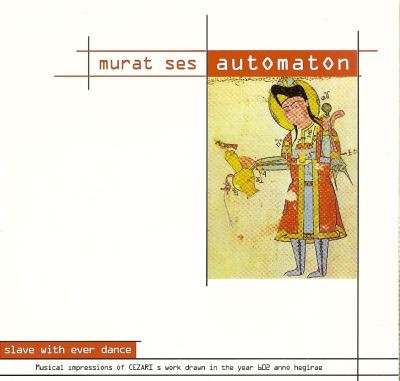 How did you get from there to where you are today?
How did you get from there to where you are today?
It is possibly my lifelong engagement with Anatolian music in terms of harmonization and making the same music accessible to anyone on this planet.
I am still an adamant student of music of all kinds and styles and I am aware of the fact that the whole matter is a lifelong learning process. This is the vital driving force behind all that. The most important thing is to be open to other cultures and people. Network is essential if you are involved in projects such as Anadolu Pop and Electric Levantine.
Regarding civilization and culture, my point of view is a very special one, looking at and beyond the contemporary issues in a way that's building bridges between Western and Eastern values. In this approach, there would be 'no clash of cultures', since we all are 'one and same thing'. Maybe we are conceiving the whole 'one' matter from different perspectives and we believe that we are seeing and experiencing differing matters. We should never forget that we are the same and 'one' thing, no matter our ethnic, cultural or religious heritage. This must be a universal mission for all of us.
This approach was the main theme of my first three solo albums (Automaton, Binfen, and Culduz). It was a trilogy based on “The Timeless and Boundless Context of Civilization”.
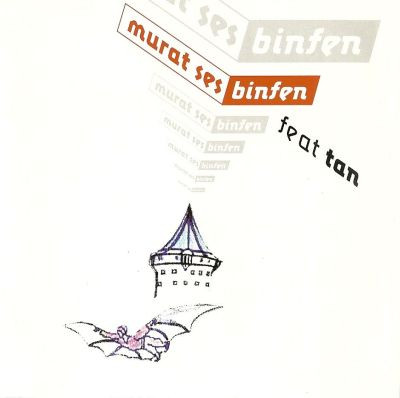 Music is not a full-time occupation for you. What else do you do?
Music is not a full-time occupation for you. What else do you do?
That's right. Music was a full-time occupation during the 60s and 70s along with my education. I am a graduate of the Austrian College in Istanbul and of the University of Istanbul. I have a master's and doctoral degree from the University of Linz. I have been working as a consultant and freelance journalist since early 80s.
And in recent years, music has been gradually moving to become a full-time occupation for me.
What subjects did you receive your degrees in?
I have a Bachelor’s degree in Economics, Management and Statistics (University of Istanbul), Master’s and a doctoral degree in Economics and International Marketing (University of Linz in Austria)
You are originally from Turkey but now live in Austria. What caused you to move away from home? How have your travels affected your music?
There were several factors that led to my move from Istanbul to Linz, Austria. In the late 70s, Turkey was suffering from socio-political turmoil. A great number of artists were getting more and more political. Nothing could be done in a real artistic sense. There was no transparency and nobody could keep track of what was going on. During that era I had the chance of getting a scholarship from Austria to finish my graduate education. So we moved (my wife Nihal and son Tan) to Austria and I received my master and doctoral degree in 1983.
The same year we moved to Austria, the Ars Electronica had its debut, so I had the opportunity of getting more contacts with the music of German and Japanese EM artists. During my stay there, I was influenced by the Berlin and Dusseldorf Schools. Also during that time MIDI gained momentum both locally and internationally which made it easier for a solo artist to realize his/her musical ideas. My latest musical impressions came from my travels to San Francisco, Miami and New York.
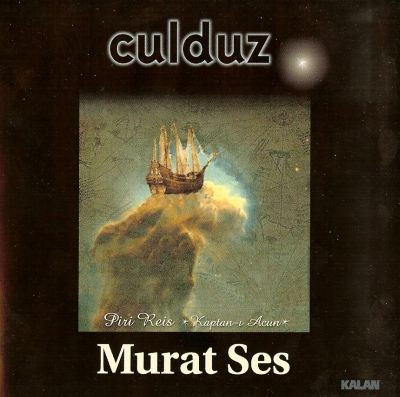 Do you record in a home studio? Or have you worked in a commercial studio?
Do you record in a home studio? Or have you worked in a commercial studio?
First steps are always taken in a home studio. At the planning stages you need a lot of time to get your 'unique' sounds, scales and whatever. Sometimes I work on a certain timbre, sample or patch that would represent a feeling possibly originating in my childhood or somewhere after. It's a very certain state of mind that must be represented in aural textures or soundscapes. In the end, all of my work has been finished in a commercial/professional studio.
The best fact today is that a home studio comes up with commercial/professional qualities, it's affordable. High-power computers and music software all make this possible to musicians everywhere in the world and in all styles.
The borders of sampling, HD recording or other forms of recording are not very easy to define and everyone is kind of desktop recording in the end.
Have you had any formal studio or recording techniques training? Or have you taught yourself as needed?
I have no formal training. I taught myself where needed. As is generally known, there are some areas where self-taught aficionados do much better.
Who are your favorite bands? Who are your musical influences?
During my college years I was a big fan and student of legendary jazz greats like Jimmy Smith and Dave Brubeck. In the 60s and early 70s, the British bands like Dave Clark Five, Animals, Beatles, Rolling Stones, Yardbirds, and Pink Floyd were my favorites. I also enjoyed folk music aired by the Turkish public radio (the sole channel those years), Italian arias my dad sang, and Austrian operettas.
The most influential artists in the beginning were Jimmy Smith then Alan Price's performance on the single 'House of the Rising Sun' and other keyboardists of the era (Brian Auger, Manfred Mann, and Vincent Crane)
During the late 60s I was more into Anatolian folk musicians like Binali Selman and others who played Anatolian reed instruments (mey, zurna, sipsi to name a few) in a very special microtonal scale. This formed my organ playing and evoked my interest in microtonal properties. During the Anadolu Pop era my organ playing was a fusion of Western playing in the manner of Anatolian reed instruments. The same influence was in my synthesizer playing, sound creations and composing in the Electric Levantine style.
What type of music do you listen to today? What current bands do you find interesting? And how have they influenced your music?
I like to listen to everything that’s unique and experimental, be it old or new. It makes no difference to me among current bands. My special interest is always fusion stuff. The biggest influence still comes from Anatolian musicians who play in the weddings or at other occasions in the villages. Listening to these different styles shapes my playing style. Sometimes it can be a zurna player or ikliğ player with a very personal style and experimenting on his/her instrument. Some subtleties no one would notice.
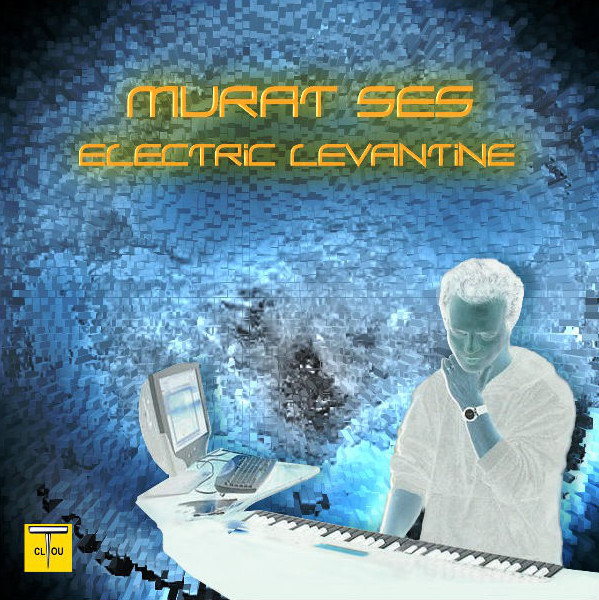 On Electric Levantine I notice some hip-hop influence. Would you please describe how this came about?
On Electric Levantine I notice some hip-hop influence. Would you please describe how this came about?
Beginning with my third solo album, Culduz, I have been experimenting with human voices and using samples from my personal field recordings. These inputs carried my compositions to a different level in a very positive sense. This aspect grew with my subsequent albums.
During my stays in the USA I made some interesting connections with talented vocalists. On my latest album, Electric Levantine, I made use of their vocal parts. The majority of them were singing ‘hip-hop style.’ My new rhythmic approach matched those small vocal parts. That’s right. There is that hip-hop influence in my sixth solo album.
What different musicians and bands have you worked with?
The first band I founded as a teenager was Meteorlar playing cover versions of British groups at that time. After that I played with the best and most influential groups (e.g. Siluetler) in Turkey and contributed my best into their overall sounds. The most relevant groups I founded and played with were Mogollar and Agri Dagi Efsanesi. Both groups were very fertile ground for applying my fusion approaches: 'Anadolu Pop' (*) possibly one of the first world music performances then and definitely first from the region (Turkey, Middle East, Levant). In the 90s I went solo, ending with six solo albums up until now in a style I call 'Electric Levantine' (**).
Recently I had the opportunity to listen to some Turkish music from the 70s. I found these recordings to be very difficult to appreciate, which is in marked contrast to your music. Since these musicians were also involved in Anadolu Pop, would you please briefly compare and contrast their music with yours?
 One of the problems when handling this kind of fusion is getting extremely local at times. Another deficiency is somehow neglecting or even ignoring the artistic aspect in trying to achieve a political image. It can be easily a must for some performers to get political in the name of getting noticed. It was a very big problem especially in the1970s. You can sometimes get a big name temporarily in your country but you would always deny accessibility to your music for international listeners.
One of the problems when handling this kind of fusion is getting extremely local at times. Another deficiency is somehow neglecting or even ignoring the artistic aspect in trying to achieve a political image. It can be easily a must for some performers to get political in the name of getting noticed. It was a very big problem especially in the1970s. You can sometimes get a big name temporarily in your country but you would always deny accessibility to your music for international listeners.
What makes the contrast to my music is that I had the reliable guide of authentic African music leading to contemporary styles. My wife Nihal, who founded one of the first Anatolian folk dance groups in Istanbul at the Austrian College, had the idea of composing and producing contemporary music out of Anatolian roots in the manner of Latin, African and Celtic experiences. It would be the first of its kind from our region. We were successful and this approach was awarded by the Academie Charles Cros (Paris, France) in 1971.
Have you played live? If so, where and when?
I have performed live predominantly in Turkey during the previously mentioned decades. I have also performed in France, Germany and Austria.
In the 60s and 70s, I was permanently touring. Then in the 80s after my move to Austria, I did not perform as frequently as I had in the past. Currently I am working hard on my planned future 'live' performances.
What types of venues have you performed in? Clubs, bars, concert halls? Any festivals?
Predominantly in concert halls. There have been some club performances, too.
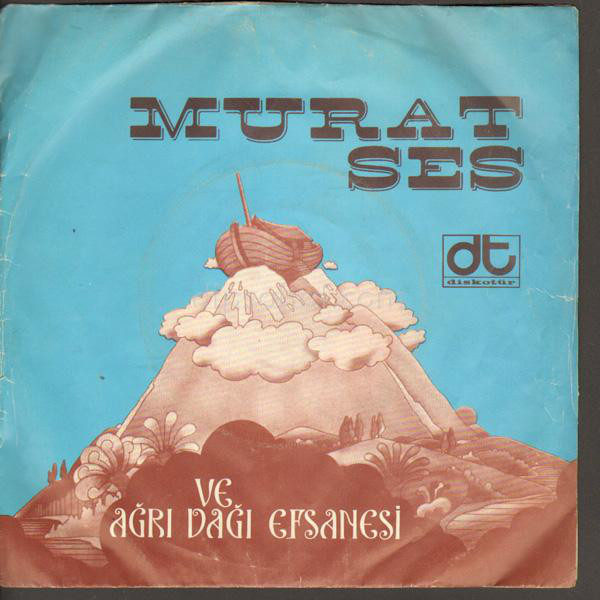 What was your most memorable performance? Where did you receive the best audience reaction?
What was your most memorable performance? Where did you receive the best audience reaction?
For me it’s very difficult to differentiate in that sense but my most memorable performances were where I improvised on my Hammond with very simple special effects like wah-wah pedal or distortion booster on my award-winning composition: “The Legend of Mount Ararat (Agri Dagi Efsanesi)”. This song lasted 10 to 20 minutes depending on my mood.
Would you rather perform live or record in the studio?
It is according to the situation. I accept and make best of what comes next. I like to perform live especially because of real-time improvisations coming from very deep inner sources and the results of that very special moments. On the other hand, studio work is also nice in terms of experimenting without hassles.
You know there are also some moments in the studio, too, where you get into some great musical context be it by adding some effects or by making an unknowingly mistake in your playing without having planned to do so J
Today you play and record solo. Do you miss playing with a band?
No. There is always support from outside, if you need some. You can invite musicians to your projects into the studio or live.
Great help comes from family. My son Tan makes me aware of best techniques which are in vogue, he even gave a composition that is on two of my solo albums (“Mare Imbrium” on Binfen and Binfen 2005 Remix), my wife Nihal aka ÖpBe is still supplying ideas, themes, and artwork (she is an award-winning graphic artist and created all the artwork and liner notes in my six solo albums and on the single we made for Phillips Records and CBS in 1971). Sometimes friends in the industry call us “Ses Team.” Ses Team is a project group with exact role definitions.
 If you could collaborate or perform with anyone in the world, who would that be and why?
If you could collaborate or perform with anyone in the world, who would that be and why?
This could be Ry Cooder or David Byrne. Both musicians are open to music of any genre without prejudices.
Of your recorded output, which release do you consider your best and why?
This is a very difficult question to answer. After finishing an album and some time after that, I always think this or that could have been done better. OK I will take care of this aspect next time. So the latest is always the best in my eyes and the next must be better.
What is next for you?
As for recording, there are a couple of new projects on the burner. I have two big piles of material: One from my former works originating from before the MIDI era, that could be re-handled and that would make an interesting outcome with technology and my experience today. The second pile comes from the MIDI and post-MIDI era. In other words I have enough material for future projects. As for performances I will invest more time for live performances.
Anadolu Pop is a musical style created by Murat Ses of Mogollar in the late 60s and early 70s. The style is a synthesis of Western and Turkish musical styles and elements and is possibly the first fusion from this geographic region. A unique album with predominantly Murat Ses compositions and arrangements (Danses et Rythmes de la Turquie d'hier à aujourd'hui) with this style was awarded the Grand Prix du Disque of the Charles Cros Academy in Paris (1971).
Electric Levantine's main elements are microtonal properties created on authentic Levantine scales, electronically produced instrument timbres, and Western music. Music in this style can be heard on all six of Murat's solo albums (Automaton, Binfen, Culduz, Automaton², Binfen 2005 Remix, and Electric Levantine). It is a more experimental form of Anadolu Pop.
Filed under: Interviews, Issue 35
Related artist(s): Murat Ses
What's new
These are the most recent changes made to artists, releases, and articles.
- Release: Davide Cedolin - Ligurian Pastoral, Vol II
Updated 2025-12-26 00:17:38 - Release: Davide Cedolin - Ligurian Pastoral
Updated 2025-12-26 00:15:05 - Artist: Davide Cedolin
Updated 2025-12-26 00:12:01 - Review: Kokkinià - The Last Are Lost from the List
Published 2025-12-26 - Review: Pymlico - Core
Published 2025-12-25 - Release: Various Artists - Soul of the Machine: A Celebration of the Life & Legacy of ARP Founder Alan R Pearlman
Updated 2025-12-24 15:58:08 - Review: TOC & Jean-Luc Guionnet - Quelques Idées d'un Vert Incolore Dorment Furieusement
Published 2025-12-24 - Review: Jussi Reijonen - Sayr: Salt / Thirst & Sayr: Kaiho – Live in Helsinki
Published 2025-12-24 - Review: Crystal Jacqueline & Friends - Smoke Road
Published 2025-12-23 - Review: Aerostation - Rethink
Published 2025-12-22 - Release: Steve Tibbetts - Close
Updated 2025-12-21 16:07:13 - Review: Serena Gabriel - Izar
Published 2025-12-21 - Review: Behind the Sun Collective - Children of the Revolution / Maggot Brain
Published 2025-12-20 - Release: Holle Mangler - Escape over Needles
Updated 2025-12-19 23:44:06 - Release: Holle Mangler - Tales from a Fairyworld - Part I
Updated 2025-12-19 14:12:42 - Release: Holle Mangler - Tales from a Fairyworld - Part II
Updated 2025-12-19 00:34:20 - Artist: Holle Mangler
Updated 2025-12-19 00:28:52 - Review: Alta Forma - Trajectory
Published 2025-12-19 - Review: Walt Shaw - Cave Printmaker
Published 2025-12-18
